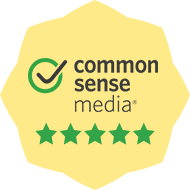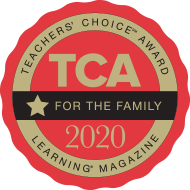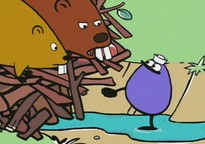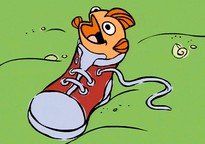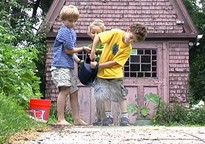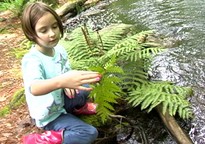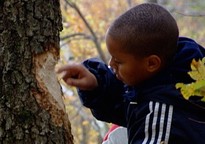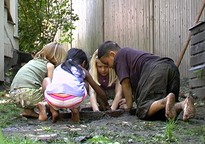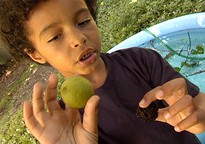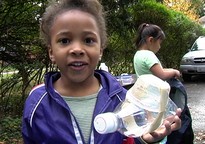Below is a list of all the materials you’ll need for the activities and learning centers.
General
❏ Let parents know that their children will be exploring water. Ask them to send in an extra set of dry clothers, just in case.
❏ water smocks (or if appropriate, have children wear bathing suits while doing activities outside)
❏ plastic table cloth or sheeting to protect floors
❏ cloth towels, paper towels, and a mop to wipe up any spills
❏ art supplies: pencils, crayons, markers, water colors, paints, printer paper and/or construction paper, scissors, glue, paste, tape, balls of blue yarn, blue wrapping paper, and/or blue cellophane wrap
❏ camera and/or video recorder
❏ clipboard, paper, and marker
❏ chart paper and marker
Week 1: Pour, Squirt, Drip, Drop
Water Table Activities
❏ water table, large tubs, and/or wading pool.
Limit the number of children at a water table to four or five at one time. Depending on the size of your group, you may want to use several water tables or a combination of water tables and large tubs. Or you can use a large wading pool outside, which makes it possible for the entire group to work together (and avoids indoor messes).
❏ plastic eyedroppers or pipettes (6” jumbo pipettes can be ordered in sets of 100 from Carolina Biological Supply catalog #73-6988 www.carolina.com or call 1-800-334-5551)
❏ turkey basters
❏ plastic cups, soda bottles, squeeze bottles
❏ funnels
❏ sponges
❏ clear flexible plastic tubes, cut into 2 and 3-foot lengths
❏ plastic baggies or rubber gloves
❏ colanders and/or strainers
❏ wide-mouthed bottle or vase
❏ paper cups
❏ medium-sized container or bucket, preferably transparent
Water Drop Activities
❏ several plastic trays
❏ small containers of water
❏ plastic pipettes or eyedroppers
❏ wax paper
❏ plastic plates
❏ toothpicks
❏ sponges
❏ paper towel
❏ cotton balls
❏ paper and markers
❏ paper towels, plastic sheets, newspapers, towels for keeping floor dry
Week 2: Puddles, Streams, Dams, and Waterfalls
❏ water containers (plastic buckets, bottles, squirt bottles, and cups)
❏ squeeze bottles
❏ digging tools or sticks
❏ garden hose (optional)
❏ 6–12 pictures each, downloaded from the Internet or found in books of:
- puddles
- streams
- rivers
- beaver dams
- human-built dams
- small waterfalls
- large waterfalls
❏ clipboards, paper, and markers
❏ objects that can change the direction of water or block water flow: rocks, pebbles, bricks, pieces of wood, sand etc.
Week 3: Sink or Float
❏ water table, large tubs, and/or wading pool.
Limit the number of children at a water table to four or five at one time. Depending on the size of your group, you may want to use several water tables or a combination of water tables and large tubs. Or you can use a large wading pool outside, which makes it possible for the entire group to work together (and avoids indoor messes).
❏ two large plastic bins, preferably transparent, with two picture signs attached that convey “Float” and “Sink”
❏ collection of objects that float or sink (rubber bands, sponges, pencils, plastic bottles with tops, wooden blocks, plastic straws, craft sticks, small plastic toys)
❏ collection of balls that sink or float (ping pong ball, golf ball, tennis ball, rubber ball, marble, Wiffle ball)
❏ for “water globes:” clear plastic bottles with tops, sequins, glitter, and food coloring
❏ an orange
❏ toy boats
❏ boat-making materials: plastic plates, pieces of Styrofoam, plastic cups, containers, and bottles, straws, craft sticks, masking tape, scissors
❏ aluminum foil, recycled Styrofoam food trays
❏ clay (this should be non-water-soluble, oil-based plasticine)
❏ pennies (a few hundred)

 Español
Español

